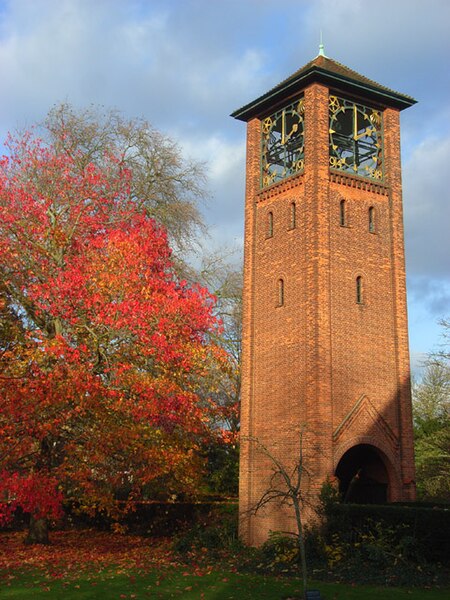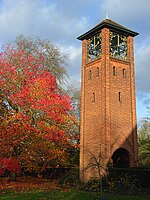University of Reading War Memorial
1924 establishments in EnglandClock towers in the United KingdomGrade II listed buildings in ReadingMilitary history of BerkshireMilitary history of Reading, Berkshire ... and 5 more
Monuments and memorials in BerkshireTowers completed in 1924Use British English from February 2023World War II memorials in EnglandWorld War I memorials in England

The University of Reading War Memorial is a clock tower, designed by Herbert Maryon and situated on the London Road Campus of the University of Reading. Initially designed as a First World War memorial and dedicated in June 1924, it was later expanded in scope to also serve as a memorial of later wars.
Excerpt from the Wikipedia article University of Reading War Memorial (License: CC BY-SA 3.0, Authors, Images).University of Reading War Memorial
London Road, Reading Newtown
Geographical coordinates (GPS) Address Nearby Places Show on map
Geographical coordinates (GPS)
| Latitude | Longitude |
|---|---|
| N 51.450444444444 ° | E -0.96119444444444 ° |
Address
University of Reading, London Road Campus
London Road
RG1 5AG Reading, Newtown
England, United Kingdom
Open on Google Maps









